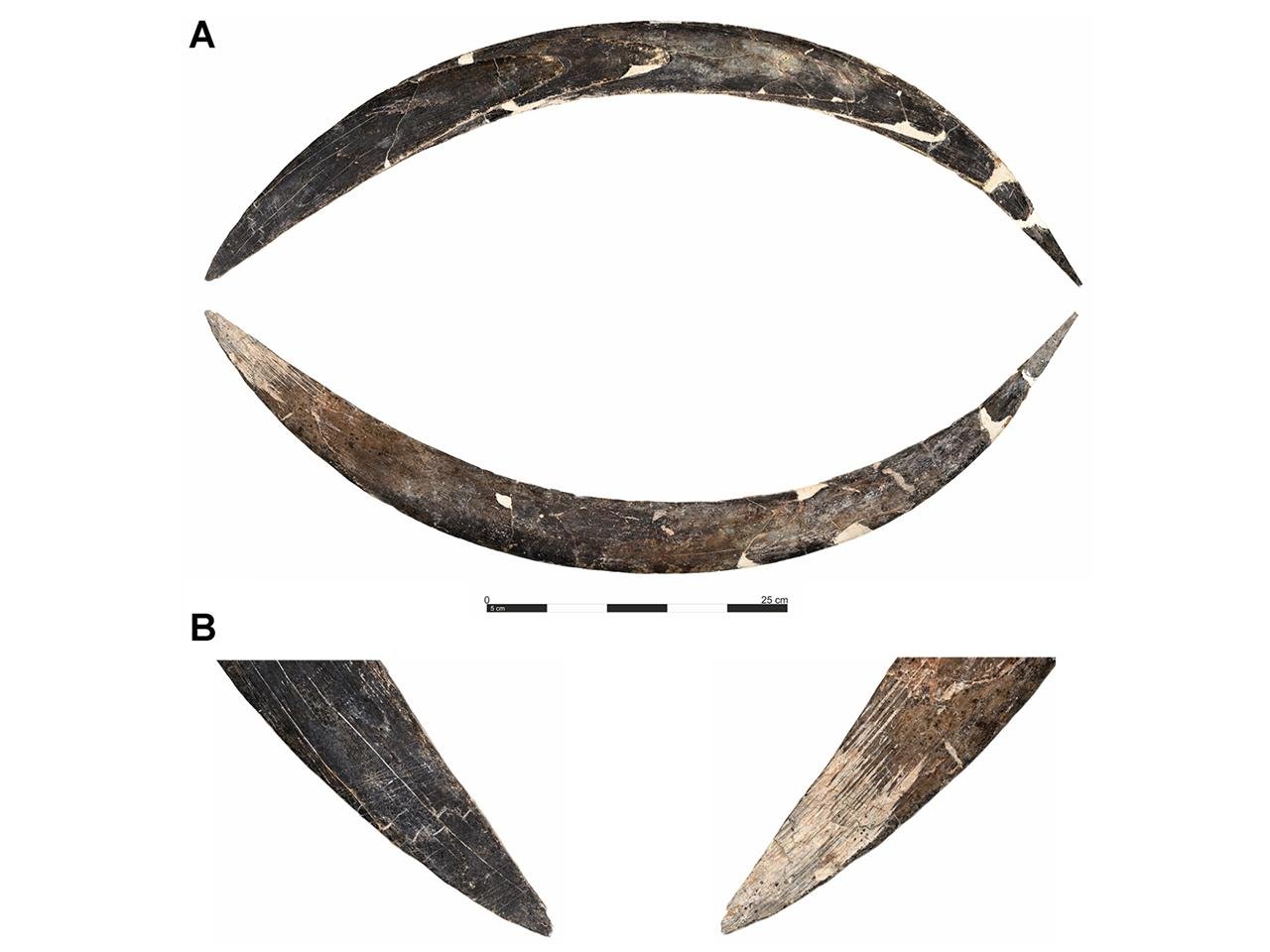A mammoth ivory boomerang, discovered in Obłazowa Cave, southern Poland, has been dated to between 39,000 and 42,000 years old, making it the oldest boomerang ever found. Not only does this find pre-date by about 30,000 years the earliest known wooden boomerangs, but it also upsets current assumptions about the origins of such complex weapons, previously attributed primarily to Aboriginal Australians.

The crescent-shaped boomerang, 72 centimeters (28 inches) in length, was initially discovered in 1985 as part of a collection of other Paleolithic items, including a human thumb bone, antler tools, fox-tooth pendants, a bone bead, and ochre-covered artifacts. The first attempts at radiocarbon dating of the boomerang put it at around 18,000 years old. This date was later discovered to be inaccurate due to suspected contamination with materials used in its preservation.
In a new paper published in PLOS ONE, an international team of researchers—led by Professor Sahra Talamo at the University of Bologna and archaeologist Paweł Valde-Nowak at Jagiellonian University—applied a more sophisticated method. They re-dated 13 animal bones and a human phalanx excavated from the same sedimentary level as the boomerang. Radiocarbon and DNA analyses confirmed that the human remains belonged to a Homo sapiens individual who lived at least 31,000 years ago. Animal remains discovered in the same level had an average age of approximately 41,500 years.
To avoid damaging the fragile boomerang itself, the scientists used advanced statistical modeling to correlate the age of the surrounding material and date the boomerang to between 42,365 and 39,355 years ago. A small amount of modern carbon—in the form of adhesive or restoration materials, for instance—can contaminate the radiocarbon date by tens of thousands of years, Talamo said, underscoring the importance of indirect dating in this case.

Made of mammoth tusk, the arched shape and flat-convex cross-section of the boomerang are very similar to Aboriginal Australian non-returning boomerangs, which were traditionally used for ceremonial or hunting purposes.
But this ancient boomerang could have had a purpose other than the functional. The fact that it shows the presence of decorative carving, traces of red pigment, and was found in the vicinity of symbolic and ornamental items suggests a ceremonial or symbolic function. The researchers cited a trace of manual wear along the shaft and its intentional placement in a circle of stones alongside the human thumb bone—indications of ritualistic use.
The find goes back to the Early Aurignacian period, some 40,000 years ago, when early Homo sapiens in Europe began to make art, figurines, and symbolic tools.

Obłazowa Cave, in the Western Carpathians and the only known Early Upper Paleolithic site in the Podhale Basin, was used by both Neanderthals and Homo sapiens between 300,000 and 12,000 years ago, during the Middle to Upper Paleolithic periods.
This groundbreaking discovery challenges the conventional narrative that boomerangs were the exclusive invention of Australians and instead identifies a much more universal and ancient human capacity for advanced toolmaking and symbolic thought.
























Comments 0